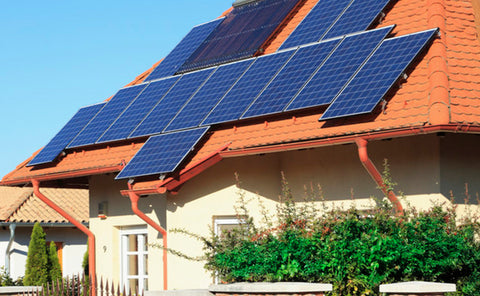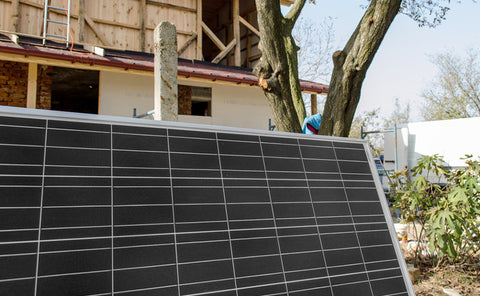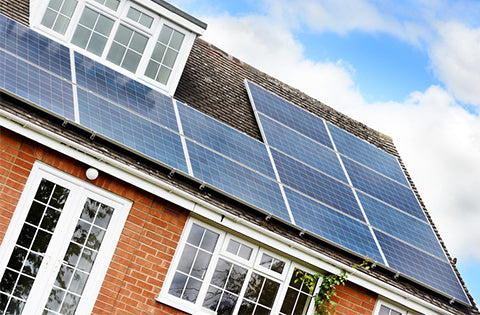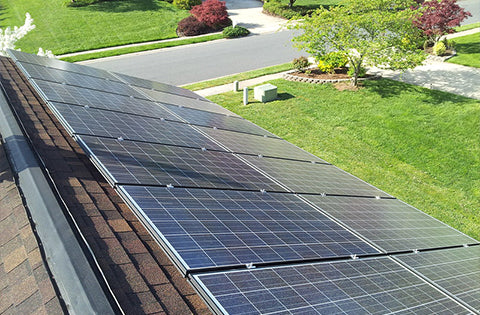Photovoltaic power generation is a kind of new energy power generation, which converts the irradiated energy of light into electric energy (DC) by using the photoelectric characteristics of photovoltaic materials. Then merges it into three-phase AC power grid through inverter. Different from large-scale photovoltaic power station, high-power and wide-area household photovoltaic power generation means that photovoltaic panels are placed on the top floor of family houses or in courtyards for commutation with low-power or micro-inverters, and the new energy can be directly used, and redundant electric energy can also be incorporated into the power grid. Household photovoltaic belongs to the category of distributed photovoltaic
Household photovoltaic is a distributed generation system that directly converts solar energy into electric energy. It follows the principle of nearby power generation, nearby grid connection, nearby conversion and nearby use. Its advantages and disadvantages are as follows:
Advantages of household photovoltaic power generation
1:Reduce loss and cost
Photovoltaic power supply is generated at the user side to supply local load, which can effectively reduce the dependence on power supply of power grid, reduce line loss and save users' electricity consumption at the same time. Surplus access to the Internet and full access to the Internet can obtain benefits.
2:Low threshold
The construction threshold is low. Making full use of existing buildings can effectively reduce the occupied area of photovoltaic power stations by using photovoltaic cells as building materials at the same time.

3:Independent operation
The effective interface with smart grid and microgrid can operate flexibly and independently without power grid under appropriate conditions;
4:Green environmental protection
The installation of photovoltaic power stations on the roof not only has the effect of heat insulation, cooling and beauty, but also can create green benefits.
Disadvantages of photovoltaic power generation for two households
1:Frequent replacement of components
The direction of power flow in distribution network will change in time, and the reverse power flow will lead to extra loss. Related protection needs to be re-adjusted, and transformer taps need to be constantly changed.
2:Difficult power control
Difficulties in voltage and reactive power regulation. After large-capacity photovoltaic is connected, there are technical problems in power factor control. Short-circuit power will also increase.

3:It is more difficult to manage
It is necessary to manage the load uniformly in the energy management system at the distribution network level under the condition of large-scale photovoltaic access. New requirements for secondary equipment and communication increase the complexity of the system.
To learn more about household photovoltaic power generation, please follow SOLARPARTS official website:
Twitter: Solarparts Instagram: Solarparts
Tumblr: Solarparts Pinterest: Solarparts
Facebook: Shenzhen Solarparts Inc
Email address: Philip@isolarparts.com
Homepage: www.isolarparts.com



